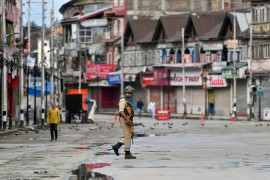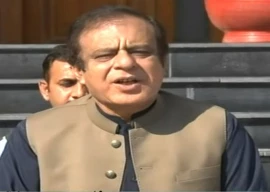
Today’s reading youth may not be acquainted with the name or the works of Alvin Toffler, but he was a big influence back in the 1980s. His book Future Shock continues to be his most powerful work to this day. As a futurist and entrepreneur, Toffler predicted many things whose time has still not come. For instance, neither subterranean nor underwater cities exist as yet. That is not to say it will not happen in the future. Still, seeing is believing. But there are subtler things he gets right. For example, his assertion that small, relatively isolated events can have far bigger consequences is now known as the butterfly effect. To make his point he uses the example of the Peloponnesian War which he considers a skirmish by modern standards, but which also had a remarkable influence on the distribution of genes, movement of people and ideas through its impact on a later day Rome. Small developments can have far-reaching effects. There are no two thoughts about it.
Predicting the future is an interesting vocation. There are so many seen and unseen variables that not everyone can dabble in it. With cutting-edge technology and countless simulations, predictions can be brought within an acceptable range of precision. But consider the fact that a tiny distortion, a small fly in the ointment can offset the projected course of causation. Remember the 2016 US presidential election? At a very early point in time it felt like it would be a dynastic war. Hillary Clinton versus Jeb Bush. Evidence suggested it would be a probability. But then a celebrity billionaire decided to run and defeated a crowded Republican field including Jeb Bush and then the Democratic candidate, Mrs Clinton. In predicting the future, domain knowledge matters. That is why after enjoying Yuval Harari’s veritable treat to the imagination, Sapiens, I struggled with his other works like Homo Deus and 21 Lessons for the 21st Century. The thought kept nagging my mind that he is a historian not a futurist and may not have the necessary tools to assess the probable outcomes.
We journalists think that we have a licence to dabble in anything we want. A good journalist after all, is supposed to be a jack of all trades even if the master of none. But then you can count on some mavericks to first develop some domain insight before entering the debate. For instance, you can expect the author of these lines to try to master the rudimentary Python, machine learning and deep learning before writing a word on the workings of artificial intelligence. Sounds only fair, right? But even then, a pinch of salt is needed to examine the work of a generalist on the future.
Predicting the shape of things to come in the fields of international relations and political science is an even harder job because social sciences don’t behave in the same elementary fashion as natural sciences. The Toba catastrophe theory might be better placed in explaining the occurrence of a population bottleneck around 75,000 years ago than the possible behaviour patterns that gradually developed, the emergence of political identities and alliances formed between those identities. Why do nations exist, how they behave and interact and form alliances (if at all) cannot be predicted by any scientific method. To begin with, there are too many abstractions (including the idea of a nation-state) which Noam Chomsky would call “the necessary illusions”. But while they might be necessary for their operational values, they remain abstractions and not physical elements of nature. Add to it the countless number of variables that severely affect the outcome and you are left with only dogmatic choices. Some of these abstractions, the idea of the West, for instance, bank on the poetic licence and illusory data of overharvested history.
That is precisely why adherents of the realist and idealist schools of thought in international relations were caught by surprise when the Berlin Wall came crashing down bringing an end to the Cold War. And why when Samuel Huntington came up with “The Clash of Civilizations”, the idea should have been subjected to extreme durability tests and the good old professor asked to go through hell. This did not happen. Instead, his word gave birth to a new dogma in the domain of international relations. The useful voices that were ignored then included Dr Ken Booth who read an illuminating paper in 1996 titled “Utopian Realism”. In this, he points out the reasons why international affairs scholars failed to predict the end of the Cold War. One reason was they had traded off academic ingenuity and objectivity for relative influence. Instead of speaking truth to power, they were speaking power to truth. Their theorising was subject to the wishes of their political masters. Could the idea of the clash of civilizations be such a product? You will have to ask the former president Clinton because Huntington is not alive to explain.
But look at how many abstractions were weaponised as a result. Not one but many civilizations. The idea of the West, political Islam, and Confucius China. A potential alliance between them. And of probable western allies like India. And while the groundwork of a new potential Cold War was laid exactly back then the cultures of potential allies seems to have been affecting the conduct of preeminent superpower.
An attempt was made to identify America’s allies by the most common denominator: democratic values. India and Israel among others were presented as democratic countries surrounded by autocracies. And they were to a great extent. But a lot has changed since then. Netanyahu, probably to hide his own corruption, had to alter the political culture and national security posture of his country. When Obama tried to effect a reset in this behaviour through some tough love, instead of changing Bibi began efforts to undermine him.
India presents a far bleaker case. Not only did it give in to absolutist obscurantism but through the blind spot accorded to a close ally it tried to manipulate the international system. While we now know that Trump himself is responsible for his surprise win, there are many who believe that his once close confidante Steve Bannon, who once tried to fashion himself as the president’s puppeteer is an Indian mole stoking racial divisions in the US and Europe. A Daily Beast story maintains that in 2015, Mr Bannon approached writer Amit Verma with Rebekah Mercer to launch Breitbart India to support Modi. He is now aggressively lobbying in the US to declare China the next enemy in close coordination with the Republican Hindu Congress’ Shalabh Kumar.
When China was accused of setting up detention camps in the Xinxiang region, it first tried to explain them and then reportedly closed them. India is setting up detention centres in Assam for 1.9 million people, but no amount of scrutiny is forcing it to change stance. So, who is a better candidate for an ally?
Published in The Express Tribune, September 7th, 2019.
Like Opinion & Editorial on Facebook, follow @ETOpEd on Twitter to receive all updates on all our daily pieces.




































1713509570-0/Taylor-Swift-Album-Release-(1)1713509570-0-270x192.webp)




















COMMENTS
Comments are moderated and generally will be posted if they are on-topic and not abusive.
For more information, please see our Comments FAQ